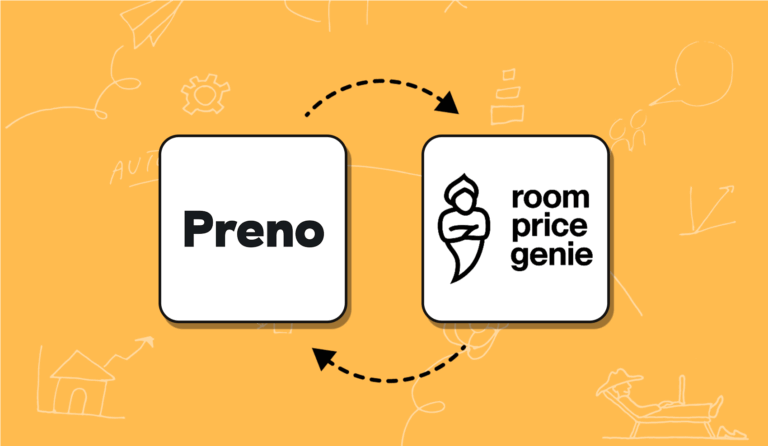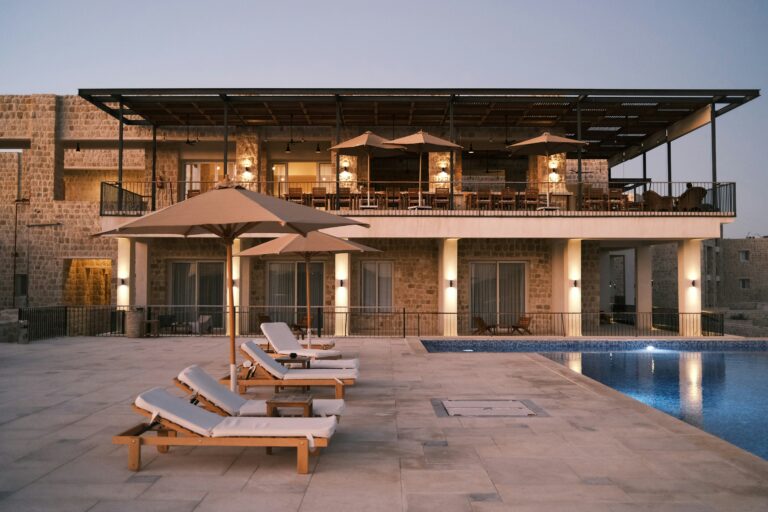Hotels are an important part of the tourism industry, and there is a lot of specialised vocabulary associated with them. In this article, we will look at some of the most common terms and phrases used in the hotel industry, as well as some key acronyms that you might come across. With this knowledge, you’ll be able to navigate your way around a hotel with ease and understand what industry insiders are talking about.
Key Hotel Terminology Definitions:
Accommodation: A place to stay, typically a room in a hotel, motel, or inn.
ADR: Average Daily Rate. A hotel’s average rate per day, normally calculated by dividing the total revenue achieved during a given period by the number of room nights sold during that period.
ARM: Average Room Rate. The average price paid per room, normally calculated by dividing the total revenue achieved during a given period by the number of rooms sold during that period.
Arrival: A guest who arrives at a hotel.
Amenities: Extra services and facilities that a hotel offers its guests, beyond the basics of a room and bed. Services and facilities can include things like a swimming pool, spa, fitness center, restaurant, bar, concierge, 24-hour room service, laundry service, and Wi-Fi.
B&B: Bed and breakfast. A type of accommodation that typically includes a bedroom and private bathroom, as well as a continental breakfast.
Best Available Rate (BAR): The lowest rate that a hotel is currently offering, which may vary depending on the date and availability.
Blackout Dates: Dates when a hotel is not able to offer a discount, e.g. due to high demand.
Booking: The process of reserving a room at a hotel.
Booking window: The period of time during which a customer can book a room in order to receive a specific rate or discount.
ENJOYING WHAT YOU’RE READING? JOIN OUR NEWSLETTER EMAIL LIST
Join our newsletter list & receive helpful hotelier tips & tricks, industry trends & more!
Breakfast included: A type of room rate that includes breakfast in the price.
Business Traveller: A person who travels for work, either regularly or occasionally.
Check-in: The process of arriving at a hotel and registering for your stay.
Check-out: The process of leaving a hotel and settling your bill.
Children’s policy: A hotel’s policy regarding guests who are under 18 years of age.
Commission: A fee that is charged by a hotel to a travel agent or tour operator for making a booking.
Concierge: A hotel staff member who is available to assist guests with their needs, such as making restaurant reservations or arranging transportation.
Continental breakfast: A type of breakfast that typically includes coffee, tea, pastries, and fruit.
Corporate rate: A discounted room rate that is available to business travellers.
CRS: Central Reservations System. A system used by hotels to manage room reservations.
Do not disturb: A sign that guests can hang on their door to indicate that they do not wish to be disturbed.
Double room: A type of hotel room that has two beds, meant for two people.
Duty manager: A hotel employee who is responsible for the day-to-day running of the hotel in the absence of the general manager.
Eco-friendly: Describes products or services that have minimal negative impact on the environment.
En-suite: A bathroom that is attached to and accessed from a bedroom.
Family room: A type of hotel room that is larger than a standard room and can accommodate a family or group.
Fitness centre: A facility at a hotel that offers guests the use of gym equipment and other exercise facilities.
Full board: A type of room rate that includes all meals (usually breakfast, lunch and dinner) in the price.
Full-service hotel: A type of hotel that offers a wide range of services and amenities, such as a swimming pool, fitness centre, and restaurants.
GDS: Global Distribution System. A system used by travel agents and other industry insiders to search for and book hotel rooms, flights, and other travel products.
Half-board: A type of meal plan that includes breakfast and dinner.
High season: The busiest travel time of the year, when hotels are typically more expensive.
Holidays: Popular travel times during the year, such as Christmas or Easter.
Hotel star rating: A rating system used to classify hotels, from one to five stars.
Hostel: A type of budget accommodation that typically has shared rooms and bathrooms.
Individual booking: A hotel reservation that is made by one person, as opposed to a group booking.
Keycard: A card that is used to open your hotel room door, instead of a traditional key.
Length of stay: The number of nights that a guest stays at a hotel.
Low season: The least busy travel time of the year, when hotels are typically less expensive.
Loyalty scheme: A scheme offered by some hotels where guests can earn points or benefits (such as discount or free stays) for being loyal to the hotel brand
Manager: An employee of a hotel who is responsible for the overall running of the property.
Meal plan: A type of package that includes meals, often offered at a discount.
Mini-bar: A small fridge in a hotel room that is stocked with drinks and snacks (usually chargeable).
Motel: A type of hotel that is typically located near a highway, with easy access for travellers.
No-show: A guest who does not arrive at the hotel on the expected date of arrival, without cancelling their reservation in advance.
Occupancy: The percentage of rooms in a hotel that are occupied at any given time.
Off-peak: A time of year when there is less demand for travel, and thus hotels are typically less expensive.
On-site restaurant: A restaurant that is located within the hotel property.
OTA: Online Travel Agency. A company that sells hotel rooms and other travel-related products and services online, e.g. Expedia, Kayak, or Orbitz.
Peak season: The busiest time of the year for travel, when hotels are typically more expensive.
PMS: Property Management Software is software built to automate admin and streamline your business.
Porter: A hotel staff member who helps guests with their luggage.
Rate: The cost of a room at a hotel, typically given per night.
Reception: The lobby or front desk area of a hotel, where guests check in and check out.
Room block: A group of rooms set aside for a particular event or group of guests, usually at a discounted rate.
Room service: A service offered by some hotels in which guests can order food and drink to be delivered to their room.
RevPAR: Revenue per available room. A measure of a hotel’s profitability, calculated by multiplying a hotel’s average room rate by its occupancy rate.
Single room: A type of hotel room that has one bed, meant for one person.
Suite: A type of hotel room that is larger and has more amenities than a standard room, often including a separate living area.
Technology: Various tools that hotels use to improve the guest experience, such as electronic key cards and in-room entertainment systems.
Tourist season: A time of year when there is an influx of tourists, often resulting in higher hotel prices.
Travel agent: A professional who helps people plan their travel, often handling bookings and reservations.
Unoccupied: A room that is not currently being used by guests.
Vacancy: A room that is available for guests to book.
Weekend rate: A lower rate offered by some hotels for stays during the weekends.
Hotel terminology can be confusing, but it’s important to know the key terms and jargon in order to understand the industry. With this guide, you’ll be able to understand the basics of hotel terminology and be more familiar with the industry jargon.
Transform Your Guest Experience With Preno
With Preno, seamless management is just a click away. Embrace the future of hospitality with our free trial, no strings attached.





